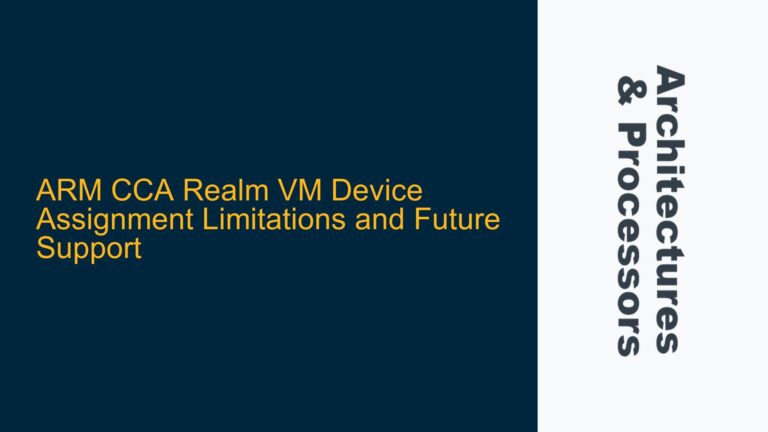SWCLK and CLKIN Frequency Relationship in Cortex-M33 Debugging
The Cortex-M33 processor, like other ARM Cortex-M series processors, relies on two critical clock signals for its operation: the system clock input (CLKIN) and the serial wire clock (SWCLK). CLKIN is the primary clock source that drives the core and peripherals, while SWCLK is used for debugging purposes, specifically for the Serial Wire Debug (SWD) interface. A common question arises regarding the frequency relationship between these two clocks: Is there a requirement for SWCLK to be slower than CLKIN, and if so, what are the constraints?
The SWD protocol, which is used for debugging Cortex-M33 devices, requires precise timing to ensure reliable communication between the debug probe and the target device. The SWCLK signal is generated by the debug probe and is used to synchronize data transfers between the probe and the target. On the other hand, CLKIN is the system clock that determines the operating frequency of the Cortex-M33 core and its peripherals. The relationship between these two clocks is critical because mismanagement can lead to debugging failures, data corruption, or even hardware damage.
ARM does not explicitly mandate that SWCLK must be slower than CLKIN, but there are practical considerations and constraints that must be taken into account. The primary concern is ensuring that the SWD interface can reliably communicate with the Cortex-M33 core without violating timing requirements. If SWCLK is too fast relative to CLKIN, the debug interface may fail to capture or transmit data correctly, leading to unreliable debugging sessions. Conversely, if SWCLK is too slow, debugging operations may become unnecessarily sluggish, though this is less likely to cause functional issues.
Potential Risks of SWCLK Exceeding CLKIN Frequency
One of the key risks of running SWCLK at a frequency higher than CLKIN is the potential for timing violations in the SWD interface. The SWD protocol relies on precise synchronization between the debug probe and the target device. If SWCLK is significantly faster than CLKIN, the target device may not be able to process incoming debug commands or data at the required speed, leading to communication errors. This is particularly problematic during high-speed debugging operations, such as flash programming or real-time trace capture, where timing is critical.
Another risk is related to the internal clock domains of the Cortex-M33. The processor uses CLKIN to drive its core logic, while SWCLK is used exclusively for the debug interface. If SWCLK is much faster than CLKIN, it can create clock domain crossing issues, where signals transitioning between the two clock domains may not be properly synchronized. This can result in metastability, where signals are caught in an indeterminate state, leading to unpredictable behavior in the debug interface.
Additionally, running SWCLK at a frequency higher than CLKIN can increase power consumption and generate additional electromagnetic interference (EMI). The SWD interface is typically designed to operate at lower frequencies to minimize power consumption and EMI. Exceeding the recommended frequency range can lead to increased power draw and potential compliance issues with electromagnetic compatibility (EMC) standards.
Best Practices for SWCLK and CLKIN Configuration
To ensure reliable debugging operations, it is recommended to follow best practices when configuring SWCLK and CLKIN frequencies. First, consult the technical reference manual (TRM) for the specific Cortex-M33 implementation being used. The TRM will provide detailed information on the supported frequency ranges for both CLKIN and SWCLK, as well as any specific requirements for their relationship.
In general, SWCLK should be configured to operate at a frequency that is compatible with the CLKIN frequency. A common practice is to set SWCLK to a frequency that is equal to or lower than CLKIN. For example, if CLKIN is running at 100 MHz, SWCLK could be set to 50 MHz or lower. This ensures that the SWD interface can reliably communicate with the Cortex-M33 core without risking timing violations or clock domain crossing issues.
If higher debugging speeds are required, consider increasing the CLKIN frequency to match the desired SWCLK frequency. This approach ensures that both clocks are operating within their specified ranges and that the SWD interface can function reliably. However, be mindful of the power and EMI implications of running the system at higher frequencies.
In cases where SWCLK must be faster than CLKIN, take additional precautions to mitigate potential risks. Implement proper clock domain crossing techniques, such as synchronizers or handshake mechanisms, to ensure that signals transitioning between the two domains are properly synchronized. Additionally, perform thorough testing to validate the reliability of the debug interface under the desired operating conditions.
Finally, consider using a debug probe that supports adaptive clocking. Adaptive clocking allows the debug probe to dynamically adjust the SWCLK frequency based on the target device’s response, ensuring reliable communication even if the initial frequency settings are not optimal. This can be particularly useful when debugging systems with variable clock frequencies or when working with custom hardware configurations.
By following these best practices, you can ensure that the SWCLK and CLKIN frequencies are properly configured for reliable debugging operations on the Cortex-M33. Proper configuration not only prevents debugging issues but also helps maintain the overall stability and performance of the embedded system.





